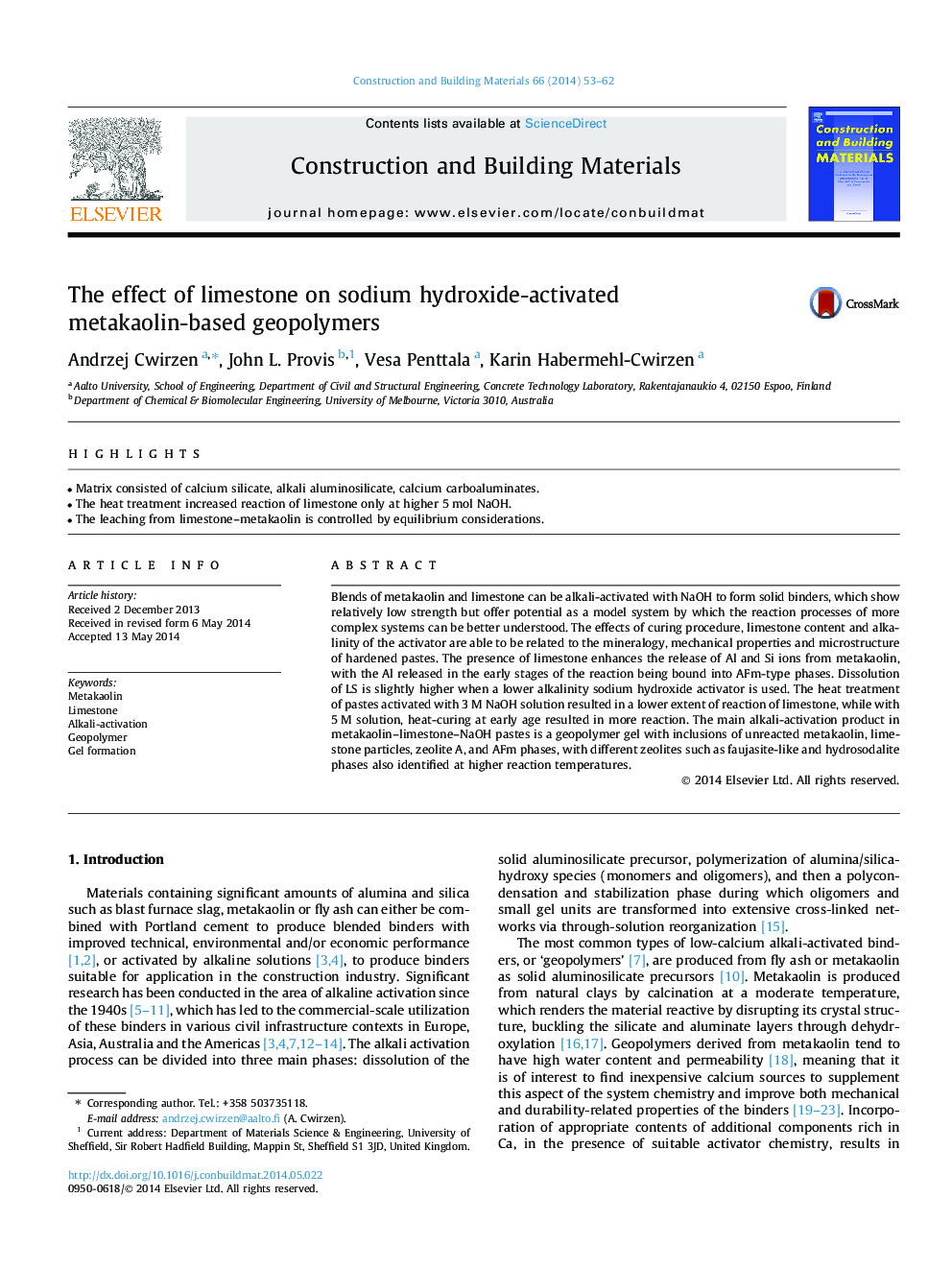| Article ID | Journal | Published Year | Pages | File Type |
|---|---|---|---|---|
| 6722345 | Construction and Building Materials | 2014 | 10 Pages |
Abstract
Blends of metakaolin and limestone can be alkali-activated with NaOH to form solid binders, which show relatively low strength but offer potential as a model system by which the reaction processes of more complex systems can be better understood. The effects of curing procedure, limestone content and alkalinity of the activator are able to be related to the mineralogy, mechanical properties and microstructure of hardened pastes. The presence of limestone enhances the release of Al and Si ions from metakaolin, with the Al released in the early stages of the reaction being bound into AFm-type phases. Dissolution of LS is slightly higher when a lower alkalinity sodium hydroxide activator is used. The heat treatment of pastes activated with 3Â M NaOH solution resulted in a lower extent of reaction of limestone, while with 5Â M solution, heat-curing at early age resulted in more reaction. The main alkali-activation product in metakaolin-limestone-NaOH pastes is a geopolymer gel with inclusions of unreacted metakaolin, limestone particles, zeolite A, and AFm phases, with different zeolites such as faujasite-like and hydrosodalite phases also identified at higher reaction temperatures.
Related Topics
Physical Sciences and Engineering
Engineering
Civil and Structural Engineering
Authors
Andrzej Cwirzen, John L. Provis, Vesa Penttala, Karin Habermehl-Cwirzen,
